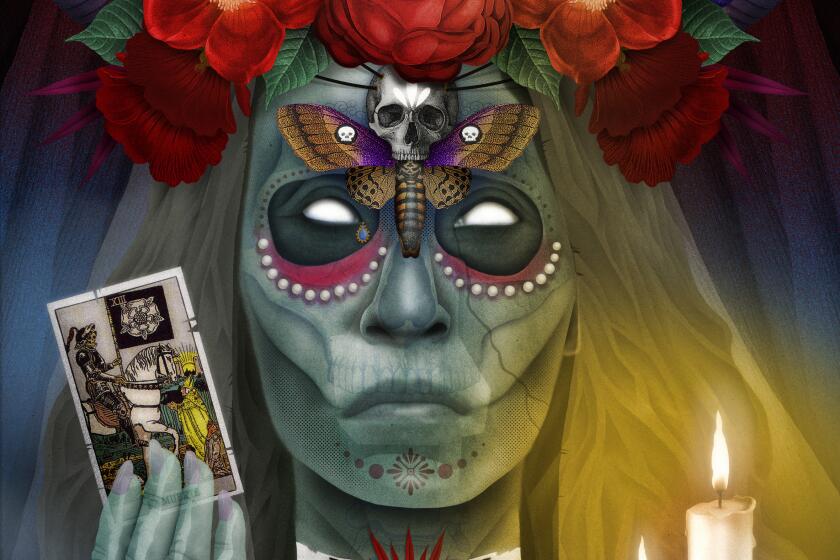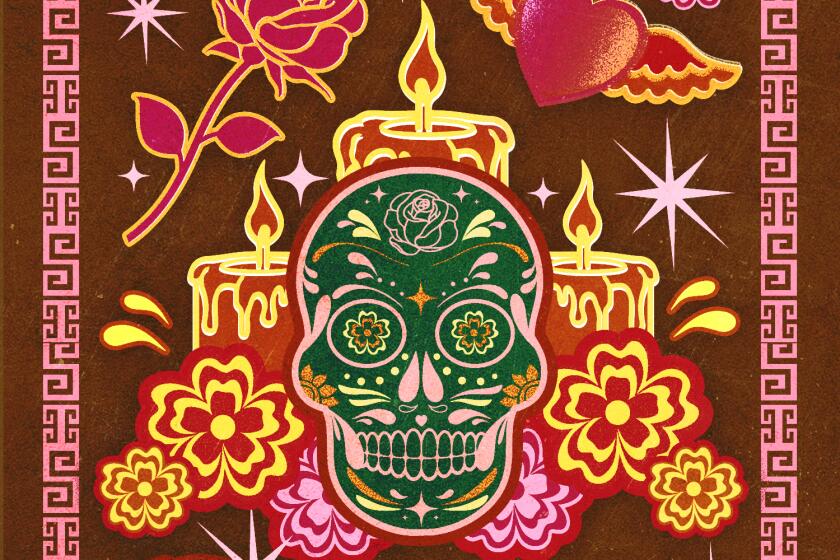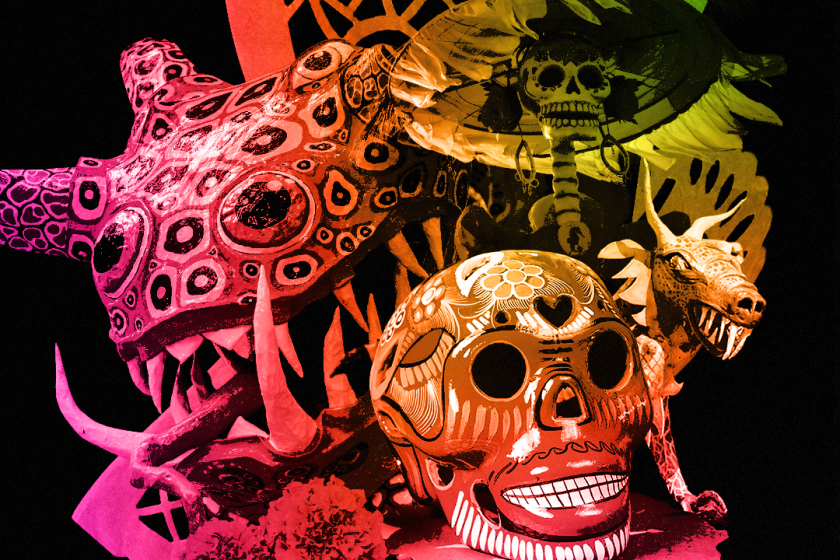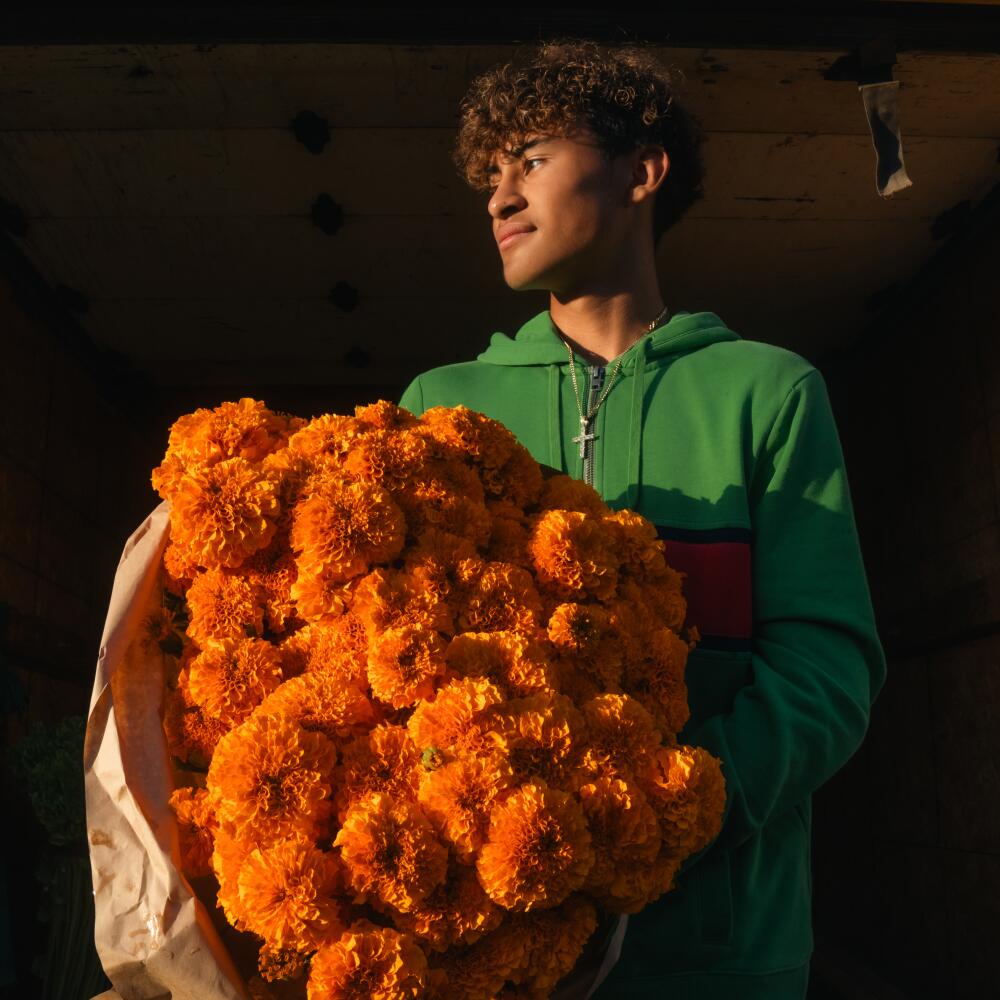
For the last seven years, Wendy Aguilar has been selling flowers in the Flower District at Bonnet Flower Distribution in downtown L.A. Weeks before the month of October her flower shop, also run by her husband, prepares to sell cempasúchils, the official flower of Día de Muertos.
With a recognizable smell and bright color, cempasúchils, also called marigolds, are the flowers that light up the path for souls to visit their ofrendas on Día de Muertos.
Vendors in downtown L.A. prepare for weeks to sell these flowers throughout October, leading up to Nov. 1 and 2.
Whether La Llorona is held up as a form of resistance against oppression, owning her power or reclaiming the monstrous bruja within, the narratives of the wailing woman have endured for centuries, reimagined into a radical icon.
Cempasúchils are a staple item associated with Día de Muertos, which is celebrated on Nov. 2 throughout many countries in Latin America. The flowers have been used by generations of Indigenous groups in different cultural ceremonies, and are placed on ofrendas, which are built to honor those who have died, as a symbol of life.
The cempasúchil is primarily sold during October leading up to Día de Muertos, according to Aguilar. In order to prepare for the season, the flower has to be planted several weeks in advance. Once the flower is harvested and sent to Aguilar’s business, there is a separate process that takes place to prepare the flower to be sold.
“They arrive to us in a pallet or in boxes and we have to process them,” Aguilar said. “We have to take out each bunch and put them in small bags so they look good and cut the stems and put them in buckets and make the displays.”
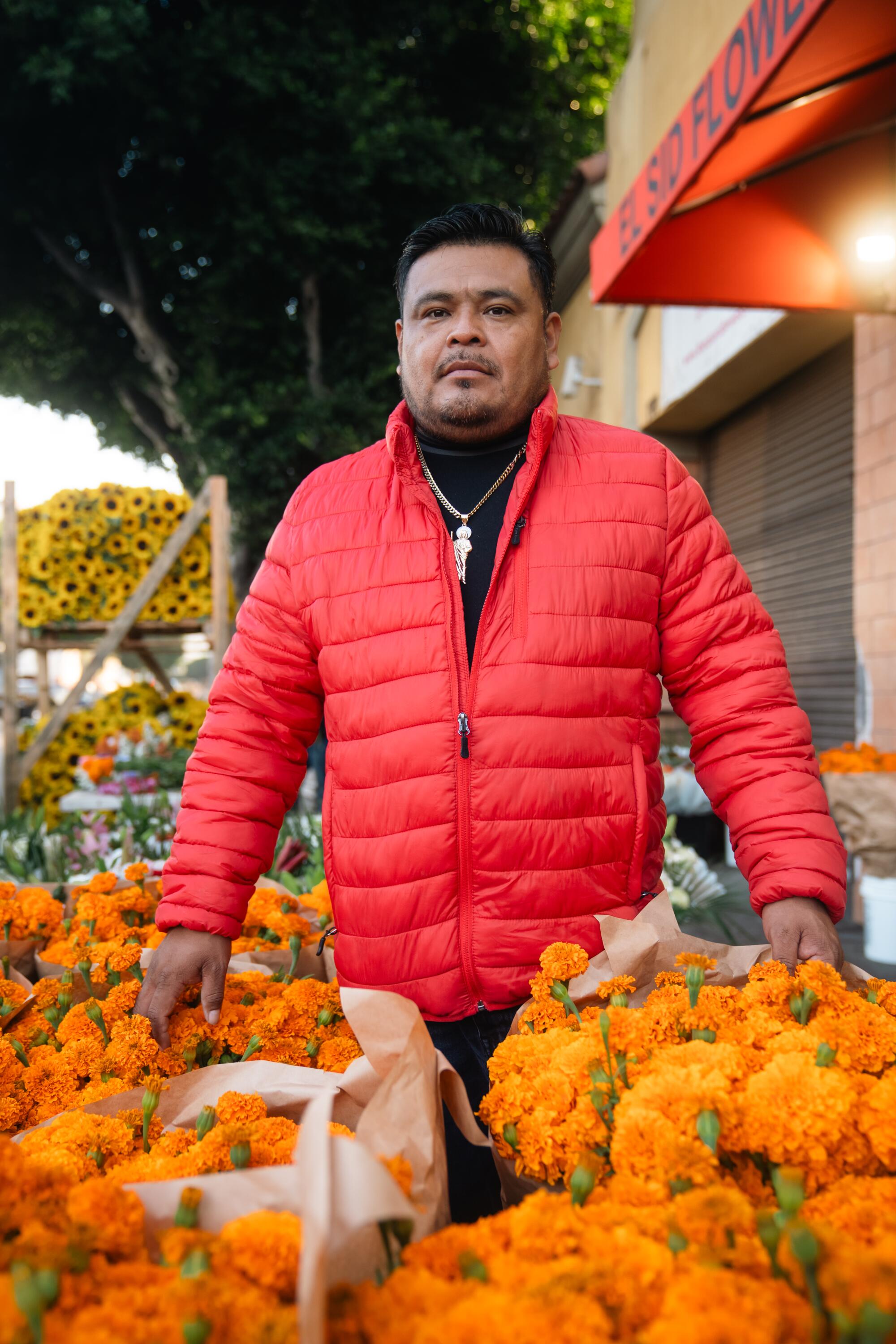
Aguilar said her father-in-law got started in the flower industry by growing his own flowers in Mexico. After a few years, Aguilar and her husband joined the business at Bonnet Flower Distribution.
The state of Guerrero in Mexico is where a majority of the process begins for the cempasúchils that Aguilar sells at her shop.
“In Mexico, we have a bodega where all the packing and processing of the flower takes place and they put the flowers into the big bunches,” Aguilar said. “We get one truck a week from Mexico.”
Here’s your guide for events in L.A. and O.C. counties that are bringing the community together to celebrate Día de Muertos.
Jose Ramirez, who works at G. J. Flower L.A., also said that the process of preparing the cempasúchils for customers can be laborious. He arrives at his shop at 4 a.m. to prepare the displays with flower arrangements for the day.
Ramirez said that every week the shop receives multiple truckloads of flowers from Mexico, Ecuador and Costa Rica. The cempasúchils start arriving toward the end of September in smaller quantities, but by the middle of October, they start to receive larger loads.
“At the beginning of October, [cempasúchil] starts to sell a little expensive, because the business starts slow and as it gets closer to [Día de Muertos], then people start coming to look for the cempasúchil,” Ramirez said.
1
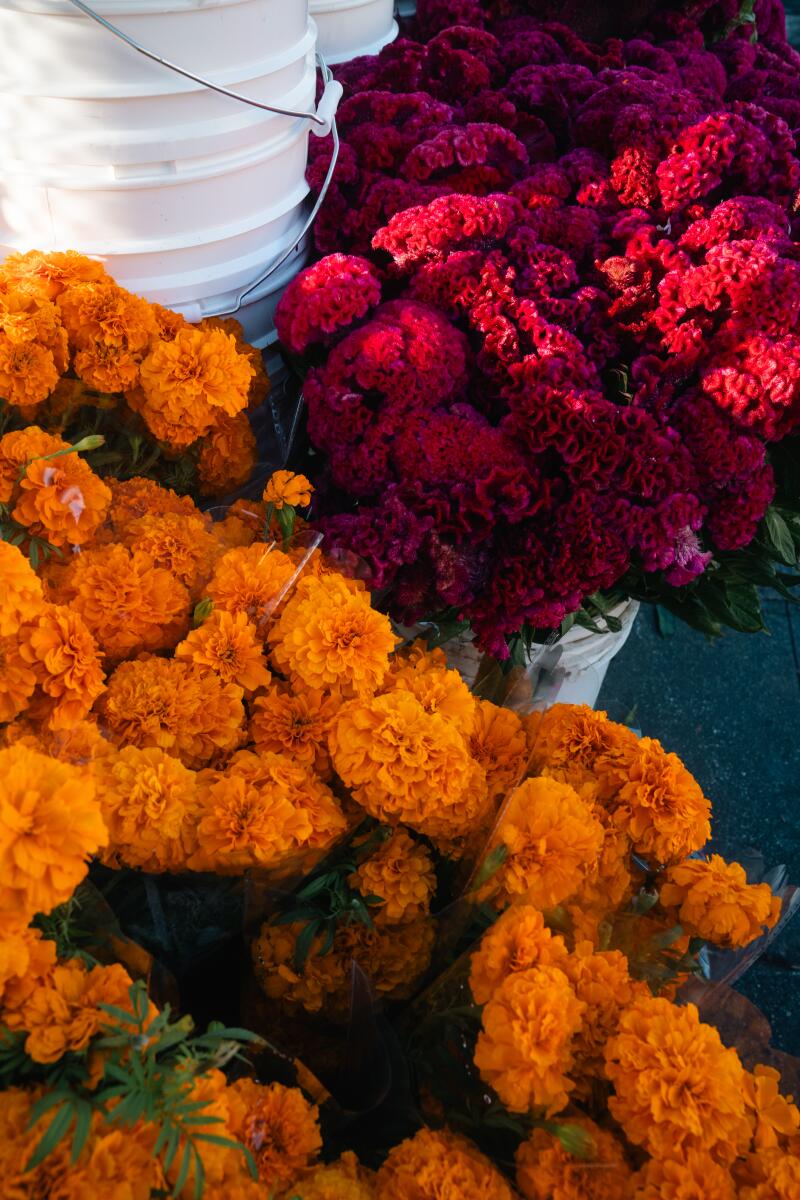
2
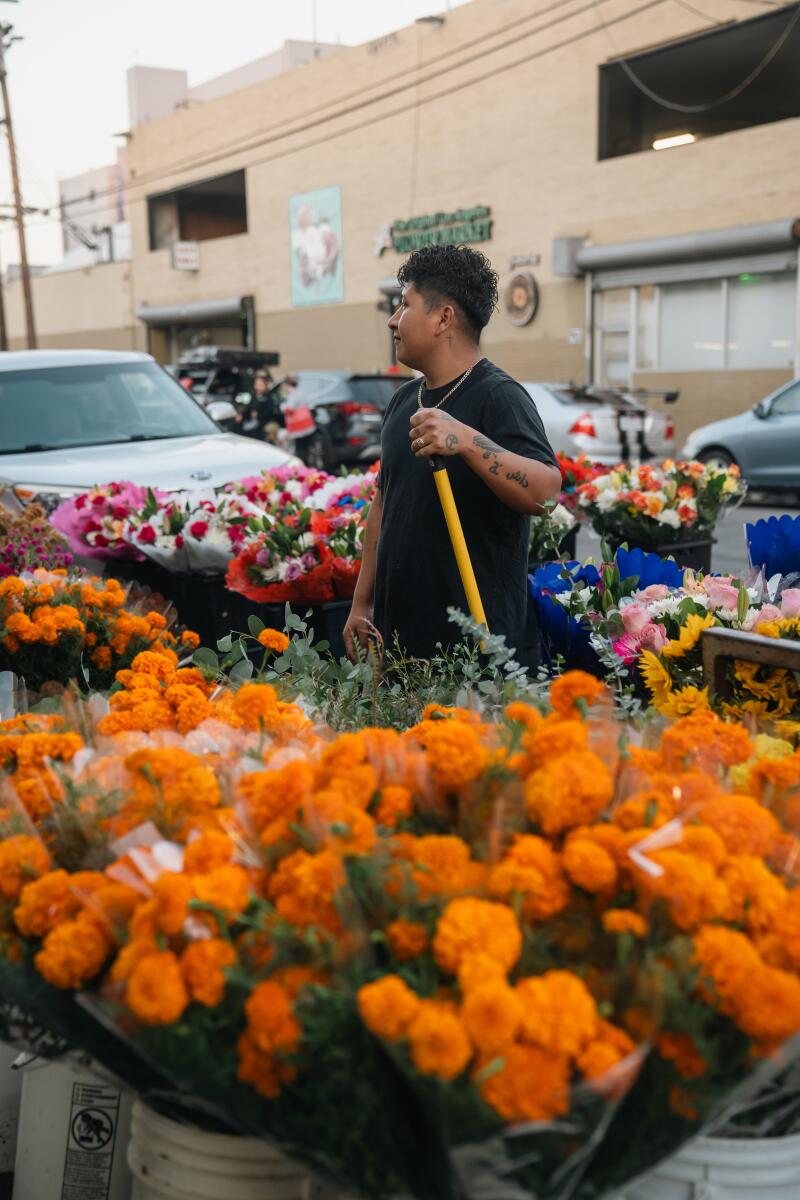
1. Cempasuhil, aztec marigold, was originally by the Aztecs in ancient Mexico during the holiday, Dia De Los Muertos, to honor the goddes of Death, Mictecacihuatl. (Nalani Hernandez-Melo/For De Los) 2. Flower market worker, Allan Barrera, taking in the street’s energy and anticpaiting customers. (Nalani Hernandez-Melo/For De Los)
Blanca Flores, who works with her husband at their family-owned business, the Vinny’s Company LLC, says that closer to the holiday some customers buy multiple buckets of cempasúchils.
“Some people do come over here and they want to purchase five buckets and five buckets is basically like 50 bundles,” Flores said.
Flores said they buy the flowers and use them to decorate their own ofrendas, or they go to cemeteries and decorate the gravestones of their loved ones.
The Día de Muertos parade is a sumptuous, extravagant delight. It might surprise some to hear that the parade stemmed from a single scene in a James Bond movie in 2015.
Her business receives the flowers from local farms in California. This allows them to receive new inventory more frequently than if they were importing the flowers from other countries.
Aguilar, Ramirez and Flores all said that they are not fans of the distinct smell of the cempasúchil but have worked with the flower for so many years they have become accustomed to it.
The three vendors grew up celebrating Día de Muertos and remember seeing the cempasúchil as a focal item relating to the holiday.
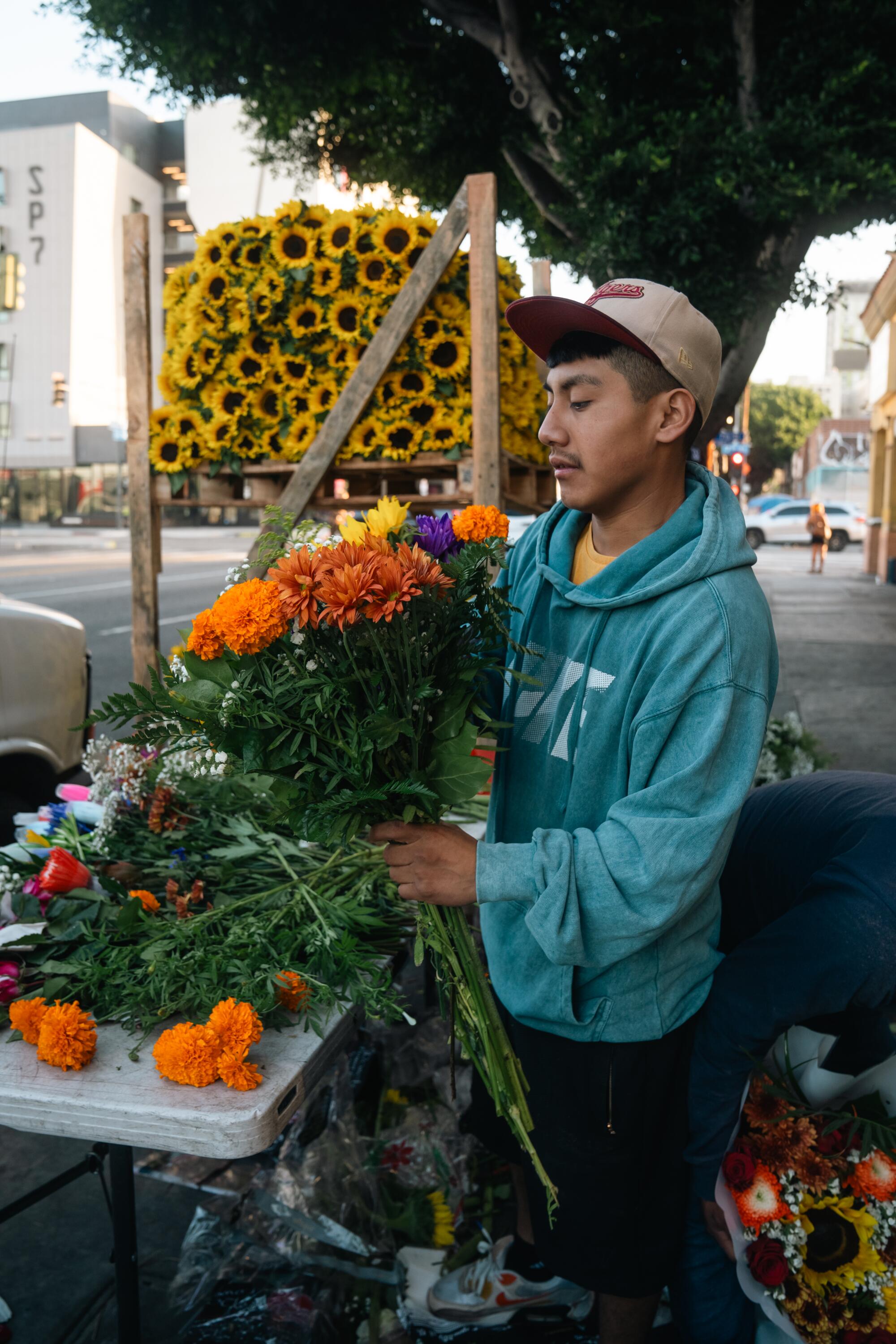
“I think that is very great, because you give them a day to celebrate those people you had in your life and to recognize them,” Ramirez said. “It’s a tradition that our parents raised us to believe in and we grew up with the tradition of making ofrendas.”
Although the season of the cempasúchil is one that takes a lot of preparation and planning, these vendors sell more than just flowers for ofrendas.
They also sell an array of flowers, including different types of roses, daisies, orchids and house plants. Floral arrangements are made by the vendors for special occasions like weddings and quinceañeras.
For speakers of some of the most commonly spoken native languages like Quechua, Nahuatl or Guarani, the conversation is less about whether you speak Spanish but rather how Indigenous languages are left out of the discussion.
“My favorite part is being able to introduce new flowers to the customers. We do carry a very high variety of flowers,” Flores said.
More to Read
The Latinx experience chronicled
Get the Latinx Files newsletter for stories that capture the multitudes within our communities.
You may occasionally receive promotional content from the Los Angeles Times.
